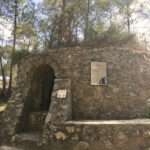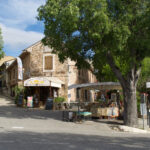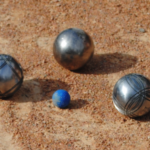A “glacière”in Provence refers to a historic facility used to store natural ice for the purpose of preserving it during the hot summer months. These structures were once common in areas where ice was rare and valuable.
In Provence, those “ice cave” were usually built in shady areas, often on hillsides or embedded in the ground. They were composed of thick stone or earth walls, with an insulated roof. The interior was lined with insulating materials such as straw, sawdust or foam. The ice was stored in the cooler and covered with additional straw or insulation to slow the melt.
Frozen water was collected during the winter from frozen rivers, lakes or ponds and transported to the cooler. Ice was used for a variety of purposes, such as food preservation, soft drinks, or even for medical purposes.
Nowadays, the traditional coolers in Provence are mainly historical and tourist remains. They are often visited by curious people interested in the history and culture of the region. Some have been preserved and restored to provide an immersive experience in the past, allowing visitors to discover the techniques used to conserve ice at a time when modern refrigeration did not exist.
In Cotignac there is an old cooler to admire in the district of the Saint Martin spring.










